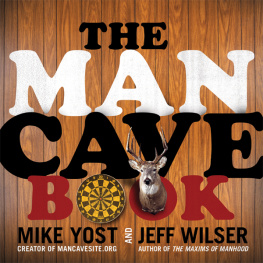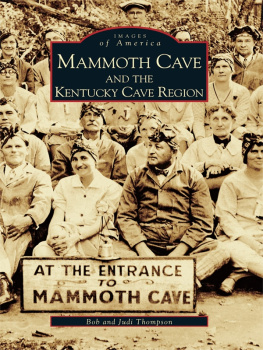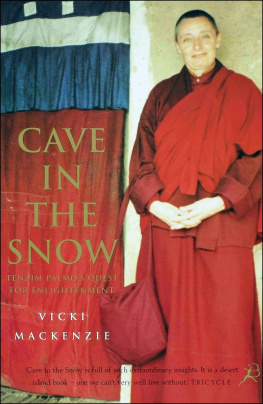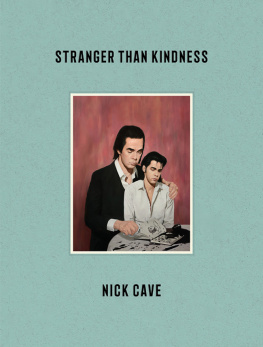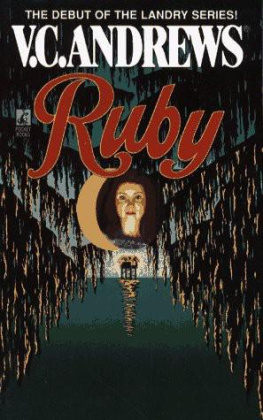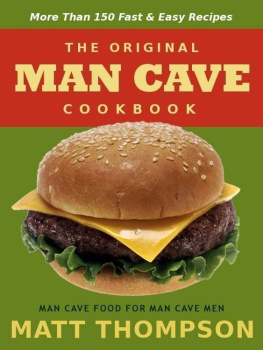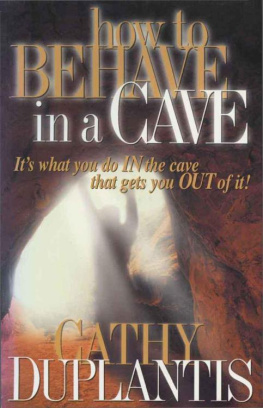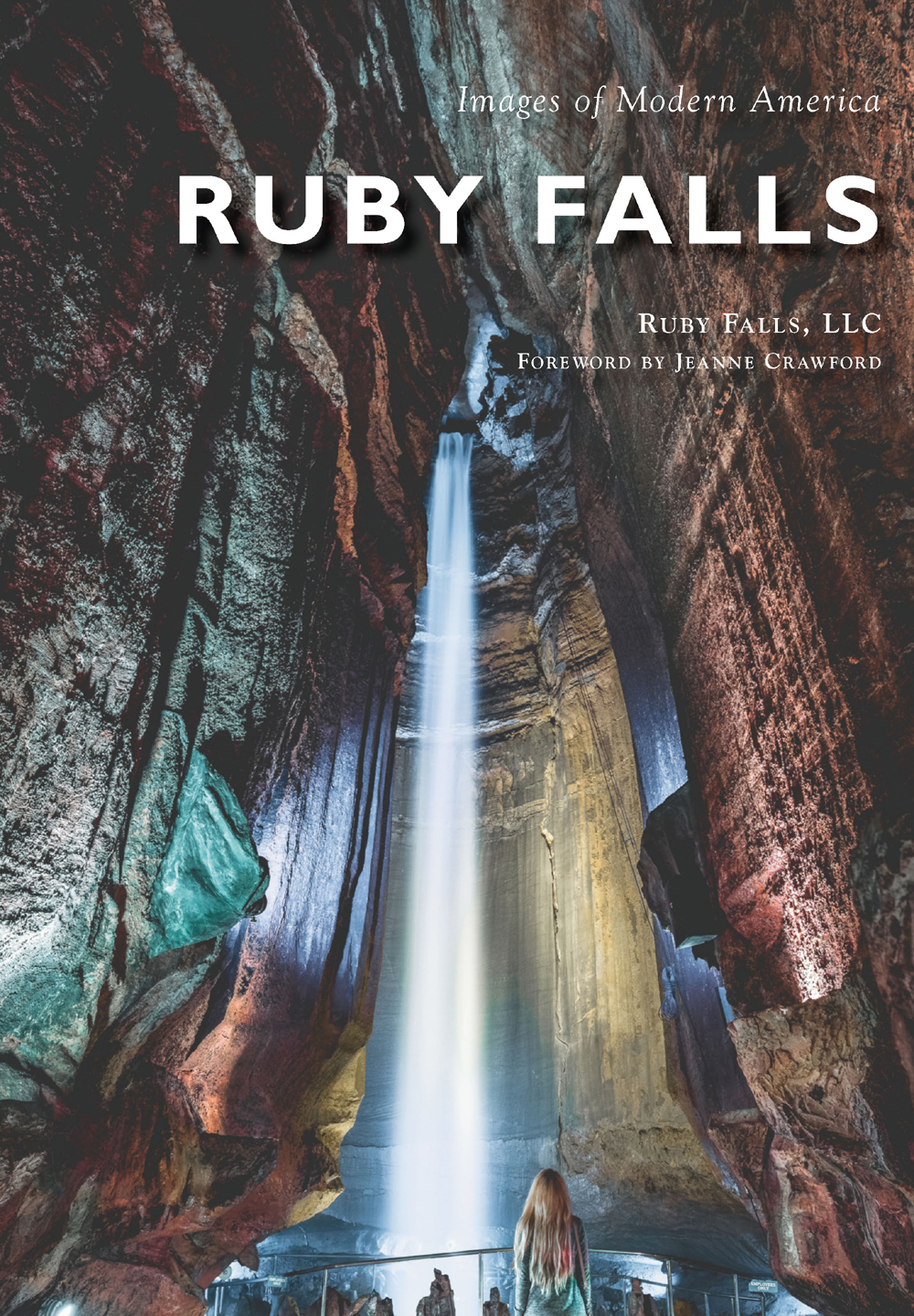
Images of Modern America
RUBY FALLS
FRONT COVER: The thundering waterfall in Ruby Falls Cavern is the tallest and deepest underground waterfall open to the public in the United States. (Courtesy of Ruby Falls, LLC.)
UPPER BACK COVER: These are some of the formations inside Ruby Falls Cavern. (Courtesy of Ruby Falls, LLC.)
LOWER BACK COVER: From left to right are the Mirror Pool, guests enjoying the waterfall, and Ruby Falls Cavern Castle. (Courtesy of Ruby Falls, LLC.)
Images of Modern America
RUBY FALLS
RUBY FALLS, LLC
FOREWORD BY JEANNE CRAWFORD

Copyright 2019 by Ruby Falls, LLC
ISBN 978-1-4671-2991-6
Ebook ISBN 9781439667606
Published by Arcadia Publishing
Charleston, South Carolina
Library of Congress Control Number: 2019934923
For all general information, please contact Arcadia Publishing:
Telephone 843-853-2070
Fax 843-853-0044
E-mail
For customer service and orders:
Toll-Free 1-888-313-2665
Visit us on the Internet at www.arcadiapublishing.com
CONTENTS
FOREWORD
This book tenderly pulls at my heart-strings. My grandfather Leo Lambert discovered Ruby Falls. Grandpa Leo looked at clouds and saw visions and possibilities. He was a thinker and dreamer who adored his love, my grandmother Ruby Losey. Grandpa followed her to Chattanooga when her family moved to the area from Indiana, and they married in 1916. As a chemist, his lifes work was in a laboratory, but his dreams changed the course of the life he and Ruby created together.
Long ago, at a Sunday school class picnic on the river, Leo and Ruby learned about a cave system with an incredible history. The railroad had sealed off access to the caves, making them inaccessible. The picnic marked the very beginning of Leos 10-year quest to open the caves. During the years of planning and securing financial backing, he worked for the US government in Illinois and Colorado. He developed a plan to drill down 420 feet through solid limestone to create a shaft for an elevator that would become the entry point for the long-sealed caves.
In 1928, Leos vision finally broke ground, and excavation began for the elevator shaft. After drilling 260 feet below the surface of Lookout Mountain, the crew discovered a jagged hole inside the mountain. Through that small opening, Leo discovered a previously unknown natural treasure. In his wisdom, Leo Lambert wrote that the discovery was a God thing. There were no more cracks or openings in the 420-foot deep shaft. Think of ita hidden jewel, known only to God, found in the heart of Lookout Mountain. Grandpa Leo said he was just a little proud that God used him as the instrument to discover this jewel and make it known to the world.
Ruby Falls was discovered because Leo Lambert loved well. When he followed Ruby to Chattanooga, he had no idea what was ahead for him. He had never even been to Chattanooga. As in all love stories, true love is the final destination. Thus it was with Ruby and Leo Lambert. This was their love and life storys final destination.
Our family is proud that Leos vision on that long-ago riverside picnic became a beloved destination and part of Chattanoogas heritage.
As Grandpa used to say: Why, this is just the bees knees!
With love,
Jeanne Whisler Crawford
ACKNOWLEDGMENTS
This book was lovingly compiled by past and current Ruby Falls team members. We would particularly like to thank the following people for their hard work and dedication to this project: Hollie Baranick, Jeanne Crawford, Ronnie Burk, Kara Van Brunt, Lara Holden Caughman, Beth Robinson, Neil Howard, Ray Zimmerman, Kent Ballew, Bob White, Hugh Morrow, Carlin McRae, Melissa Wagner, Brent Wade, Michael Brinkley, Roy Davis, Nick Skierra, Matt Owens, Britney Felker, the Day Ruhlman family, Diane Mallow Brown, Drew Thackston, Kayla Johnson, Libby Johnson, Albert Borum, David Boomer Brown, and Dustin Lindberg.
Unless otherwise noted, all images appear courtesy of Ruby Falls, LLC.
INTRODUCTION
It was an unlikely chemist from Indiana who ushered in a new age of exploration with an accidental discovery deep within Lookout Mountain. The discovery of Ruby Falls in Chattanooga, Tennessee, and the legacy it created are both remarkable and endearing. It is a tale of unlikely odds, love, and determination.
The story begins with a young man following his heart. Leo Lambert and Ruby Losey began dating as high school classmates in Gary, Indiana. After graduation, Leo was working as a chemist when Ruby moved with her family to Chattanooga, Tennessee. After a short time apart, Leo decided to follow Ruby and relocated to Chattanooga, where the couple married in 1916. Continuing his work as a chemist, Leo enjoyed exploring his new surroundings.
Leo learned of the rich history and folklore surrounding a local cave visible from the Tennessee River. Lookout Mountain Cave was well known to locals through centuries of use, first by Native Americans, followed by later visits for clandestine meetings, then as a hospital during the Civil War, and a legendary hideout for moonshine runners. Leo was dismayed to find only the first 20 feet of the cave was publicly accessible. In 1905, Southern Railroad Company intersected the cave to build a much-needed railway tunnel through Lookout Mountain, closing off the remainder of the cave. Driven by his desire for all to have access to explore and learn from its distinguished history, Leo was determined to re-open Lookout Mountain Cave.
After spending years researching various methods to access the cave, Leo came to an unusual solution in 1928 and traveled back to Indiana to share his plan with potential investors. The investors agreed to fund Leos plan to excavate an elevator shaft descending 420 feet into the solid limestone of Lookout Mountain, giving access to the long-sealed cave.
With financing secured, Leo bought the land above Lookout Mountain Cave and excavators began drilling the shaft in the fall of 1928. Progress was slow but steady as crews drilled around the clock, removing five feet of limestone every 24 hours. In late December, the team was 260 feet into the mountain when they hit a void in the rock and felt a rush of air escape.
The workers excitedly called the Lambert home, leaving an urgent but vague message with Leos young daughter. Leo rushed to the excavation site thinking something terrible had occurred. After arriving, he quickly realized the opposite. The 18-inch tall, five-foot wide opening in the rock was a passage to the unknown inside the mountain.
The following day, December 30, 1928, Leo led a small group of explorers into the darkness through the tight opening. By the time they emerged from the opening 17 hours later, Ruby was certain that Leo and the others had met their deaths. Instead, Leo returned exhausted and exhilarated by what they had discovered hidden inside the mountain.
Leo enthusiastically recounted how they crawled on their bellies inside a confining passage for six hours before the tunnel opened to a place where they could stand. They explored sections of the cavern with flowing underground streams and remarkable active geological formations. Moving further into the cavern, they heard the distant sound of rushing water. Following the sound, Leo hurried forward, falling when the floor elevation dropped beneath his feet. A thick layer of mud cushioned his landing. After picking himself up, the now dimming light of his carbide lamp reflected off a glimmer of falling water. Once the others made their way into the passage, their combined lights could just make out a plunging waterfall right in front of them. Eager to report on their findings, the group slowly made their way back to the anxious group assembled aboveground.
Next page


